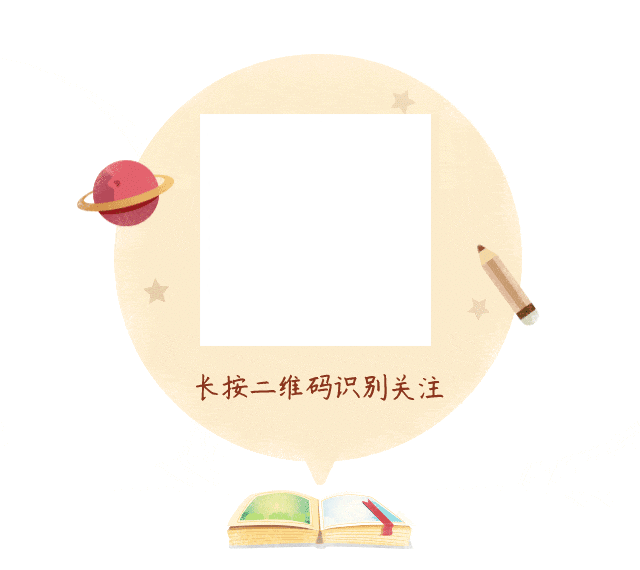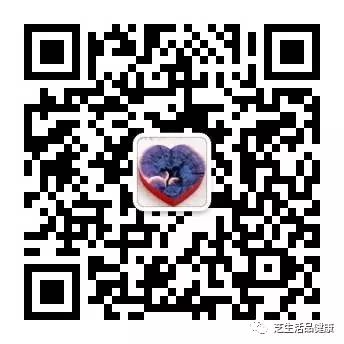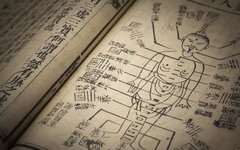
壹
The Eight Extraordinary Meridians refer to the Du Mai (Governing Vessel), Ren Mai (Conception Vessel), Chong Mai (Penetrating Vessel), Dai Mai (Belt Vessel), Yin Wei Mai (Yin Linking Vessel), Yang Wei Mai (Yang Linking Vessel), Yin Qiao Mai (Yin Heel Vessel), and Yang Qiao Mai (Yang Heel Vessel). Unlike the twelve primary meridians, they do not directly connect to the organs and do not have a paired relationship with the exterior, hence they are termed “extraordinary meridians.”
These meridians serve two main functions: first, they connect the twelve meridians, linking those that are close in location and similar in function, thus regulating the qi and blood of related meridians and coordinating yin and yang; second, they regulate the accumulation and distribution of qi and blood in the twelve meridians, acting like reservoirs, while the qi of the twelve meridians flows like rivers.
The Eight Extraordinary Meridians were mentioned in scattered records in the “Huangdi Neijing” (Yellow Emperor’s Classic of Medicine), but were comprehensively discussed in the “Nanjing” (Classic of Difficult Issues), which introduced the term “Eight Extraordinary Meridians.”
Among the Eight Extraordinary Meridians, the Ren Mai and Du Mai are particularly significant due to their associated acupoints, collectively referred to as the “Fourteen Meridians.” All fourteen meridians have specific pathways, symptoms, and associated acupoints.
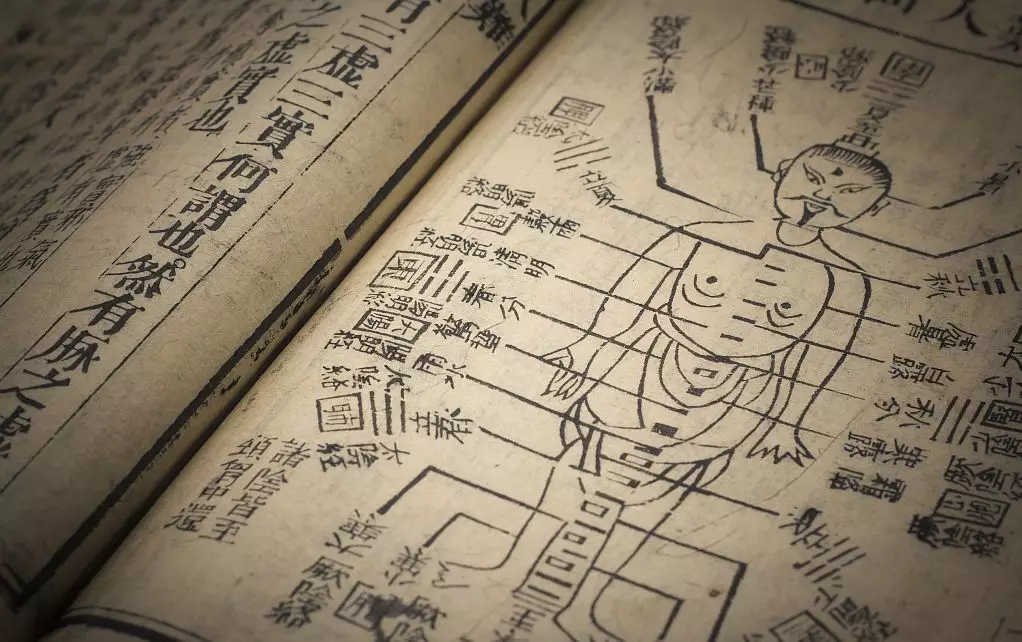
贰
Opening the extraordinary meridians allows individuals to feel a smooth flow of qi and blood throughout their body, resulting in increased vitality. The method of opening the Eight Extraordinary Meridians is a crucial aspect of traditional dual cultivation practices. Throughout history, it has been regarded as a closely guarded secret, with no disclosure in various alchemical texts and Daoist scriptures. Li Shizhen in “A Study of the Eight Extraordinary Meridians” states, “All humans possess these eight meridians, which are closed and inactive; only the immortals can open them with yang qi, thus achieving enlightenment. The eight meridians are the roots of pre-natal energy and the ancestors of all qi.”
The eleventh generation successor of the Longmen school, Zhao Bichen, first revealed this practice in his book “Clarifying the Methods of Life and Nature,” providing a detailed introduction to the technique. His disciple, Niu Jinbao, elaborated on the Eight Extraordinary Meridians in his book “Methods for Health and Longevity.” However, truly understanding and mastering this practice is not an easy task.
Among the eight meridians, the Ren and Du meridians are the most important. They play a significant role in the entire dual cultivation process, as the ancients said: “The Ren and Du meridians are the meridians of the human body, the path of yang fire and yin talisman, and the place where water and fire interact.”
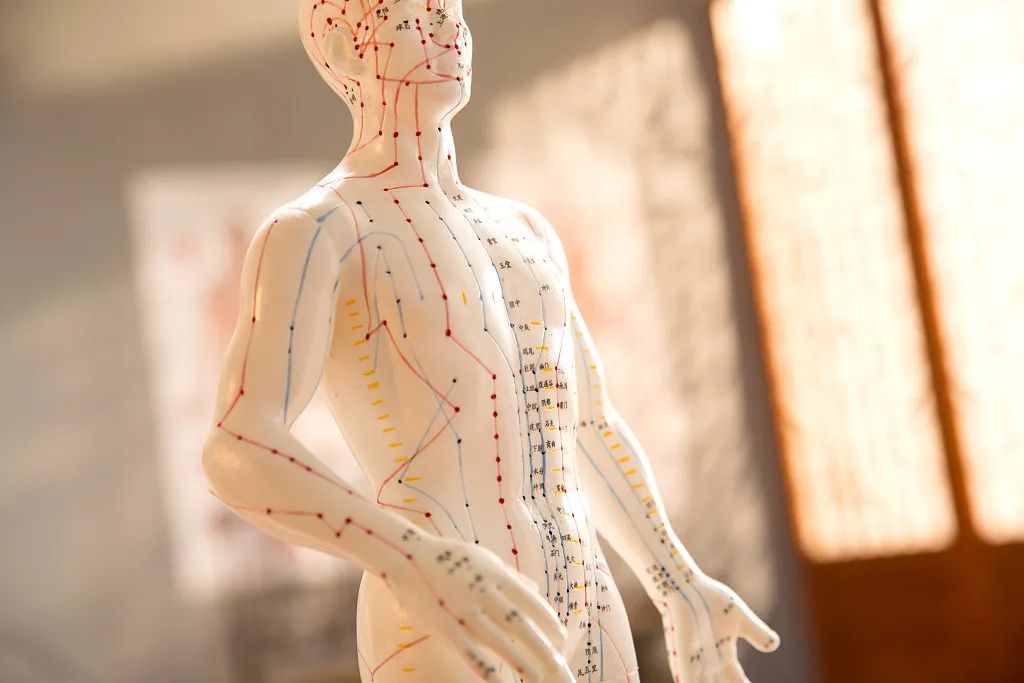
叁
The twelve primary meridians are the main body of the meridian system, characterized by their connection to the organs and their paired relationships with the corresponding yin and yang meridians. They include the three yin meridians of the hand (Taiyin Lung Meridian, Jueyin Pericardium Meridian, Shaoyin Heart Meridian), the three yang meridians of the hand (Yangming Large Intestine Meridian, Shaoyang Sanjiao Meridian, Taiyang Small Intestine Meridian), the three yang meridians of the foot (Yangming Stomach Meridian, Shaoyang Gallbladder Meridian, Taiyang Bladder Meridian), and the three yin meridians of the foot (Taiyin Spleen Meridian, Jueyin Liver Meridian, Shaoyin Kidney Meridian), collectively known as the “primary meridians.”
The connection patterns of the twelve meridians: Yin meridians and yang meridians (mutually paired) intersect at the extremities of the hands and feet, yang meridians of the same name intersect at the head and face, and yin meridians intersect in the chest.
In addition to the twelve primary meridians, the human body has a more important balancing system, which is the Eight Extraordinary Meridians. The Eight Extraordinary Meridians are our lifelines; as long as you massage the major acupoints on these meridians daily, you will feel a surge of clear yang energy in your body.
The Eight Extraordinary Meridians regulate the accumulation and distribution of qi and blood in the twelve meridians. There are eight representative acupoints among the eight meridians: Gong Sun (Gong Sun), Nei Guan (Nei Guan), Lin Qi (Lin Qi), Wai Guan (Wai Guan), Shen Mai (Shen Mai), Hou Xi (Hou Xi), Lie Que (Lie Que), and Zhao Hai (Zhao Hai). The effects of each acupoint can be likened to a “nuclear reactor,” treating a wide range of issues with just one treatment.
一、Nei Guan (Nei Guan): Nourishing the Heart and Beauty
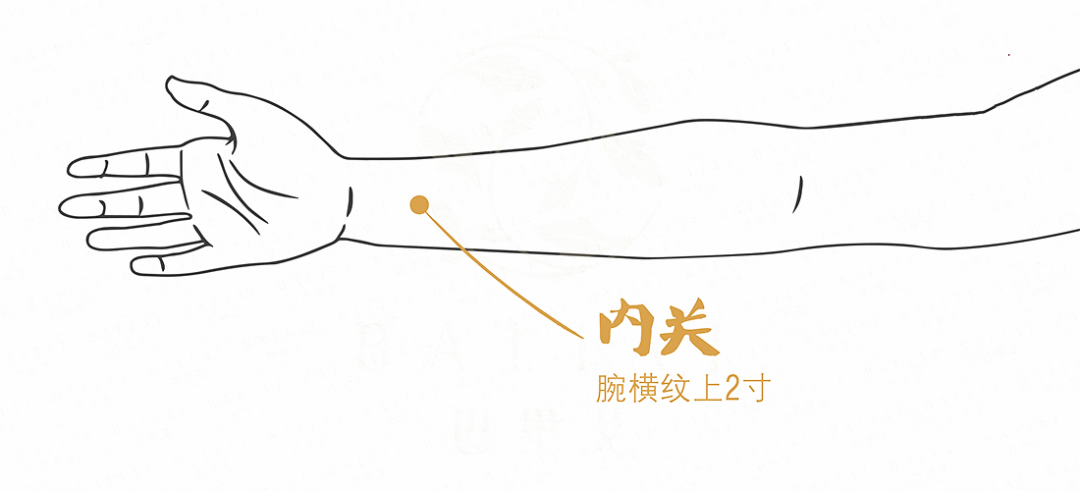
Many women between the ages of 40 and 50 often experience symptoms such as palpitations, shortness of breath, and night sweats. Hospitals may not identify any specific illness, often labeling it as menopausal syndrome or sub-health.
In fact, according to ancient wisdom, women at this age are generally in a phase of decline, with aging beginning in the Yangming Meridian, gradually leading to a decline in the qi and blood of the three yang meridians. As the head is the meeting point of all yang, if the qi and blood cannot reach the face, wrinkles and spots will appear. A person’s beauty is closely related to qi and blood. The heart governs the spirit, and its radiance is reflected in the face. The spirit of the heart relies on qi and blood for nourishment; when qi and blood are abundant, it naturally reflects on the face. Therefore, women should first nourish their heart to enhance their beauty.
The Nei Guan acupoint belongs to the Pericardium Meridian, connects with the Ren Mai, and is one of the meeting points of the eight meridians. The true efficacy of the Nei Guan acupoint lies in its ability to open the body’s internal mechanisms, benefiting qi and blood, calming the spirit, and enhancing beauty. The Nei Guan acupoint is easy to locate; it is on the inner side of the arm, two inches above the wrist crease. When locating the acupoint, make a loose fist and place the hand flat, then use the index, middle, and ring fingers of the other hand to align with the wrist crease, with the index finger pressing on the Nei Guan acupoint. This acupoint can be massaged anytime and anywhere, applying pressure until a slight soreness is felt.
二、Wai Guan (Wai Guan): The “Clever Ear Acupoint”

Traditional Daoist medicine believes that temporary hearing issues are a manifestation of insufficient yang qi in the body. So what role does the Wai Guan acupoint play in this context? Massaging the Wai Guan acupoint helps to enrich the yuan yang qi of the Sanjiao Meridian and facilitates the circulation of yuan qi throughout the body. When this acupoint is blocked, it can lead to a relaxed and collapsed eardrum that fails to return to its normal state.
Clinically, the Wai Guan acupoint can also be used to treat acute lumbar sprains. One patient in his 40s experienced severe pain after bending down to pick something up quickly. After acupuncture and massage at both Wai Guan acupoints, along with movements to twist the waist, the pain completely disappeared within minutes, and he was able to move normally again. The Wai Guan acupoint is a connecting point of the Sanjiao Meridian, located two inches above the wrist crease on the back of the wrist, opposite the Nei Guan acupoint. It has the effects of dispelling wind, relieving pain, and promoting circulation, making it effective not only for acute lumbar sprains but also for arthritis and cervical spondylosis.
三、Lie Que (Lie Que): Special Treatment for Stiff Neck and Migraine
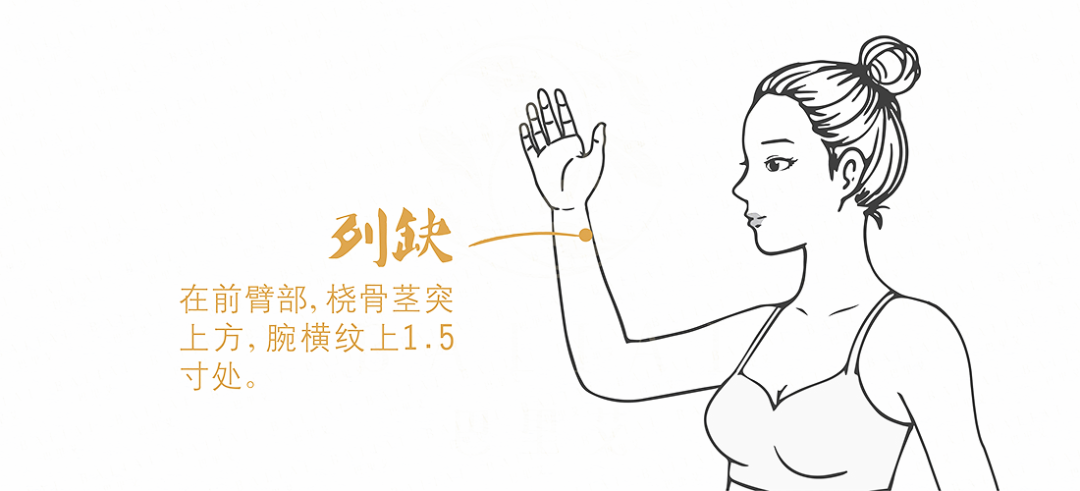
Stiff neck is a common experience that can be quite painful. It can also be an early signal of cervical spine issues. Individuals who frequently experience stiff necks should take preventive measures to avoid developing cervical spondylosis. The Lie Que acupoint is particularly effective in preventing cervical spondylosis. On the human body, the Lie Que acupoint serves as a tool for addressing head-related ailments.
According to the “Huangdi Neijing,” the Lie Que acupoint primarily treats migraines, headaches, and stiff necks. In the “Great Compendium of Acupuncture and Moxibustion,” there is a well-known verse that states, “For neck and head ailments, seek the Lie Que acupoint.” This means that any issues above the neck can be treated and regulated using this acupoint. The Lie Que acupoint is easy to locate; it is 1.5 inches above the wrist crease on the radial side. When locating the acupoint, cross the thumbs of both hands, and the depression reached by the index fingers is the acupoint. The technique for using the Lie Que acupoint primarily involves flicking.
四、Hou Xi (Hou Xi): Treatment for Cervical and Lumbar Disorders
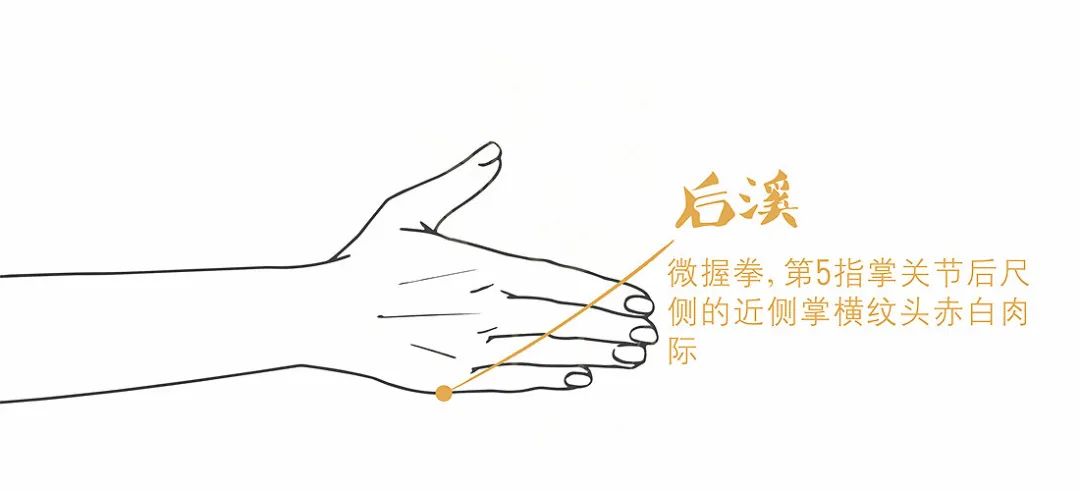
How to locate the Hou Xi acupoint? Make a fist, and the acupoint is located at the distal end of the transverse crease behind the fifth finger joint (i.e., the end of the transverse crease behind the fist).
If you are sitting in front of a computer, you can place the Hou Xi acupoint on the edge of the table and use your wrist to roll your hands back and forth, achieving a stimulating effect. During the rolling, a slight soreness will be felt. Spending just three to five minutes daily on this can significantly benefit the cervical and lumbar regions.
五、Zhao Hai (Zhao Hai): Treatment for Throat Pain
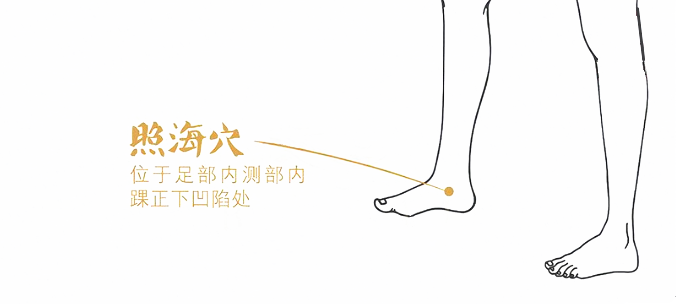
For sore throats, massaging the Zhao Hai acupoint can yield excellent results, as it belongs to the Yin Qiao Mai and intersects with the Shaoyin Kidney Meridian, making it one of the key meeting points of the eight meridians. It has the functions of nourishing the kidneys, clearing heat, and regulating the Sanjiao, providing both nourishment and heat-clearing effects.
Sun Simiao in “Essential Prescriptions Worth a Thousand Gold” refers to this acupoint as “Luo Yin,” indicating that if there is an issue with this acupoint, it can lead to a decrease in kidney water, resulting in kidney yin deficiency and the rise of empty heat. Therefore, whenever we feel discomfort in the chest, dryness and pain in the throat, hoarseness, or even chronic pharyngitis, we can press this acupoint, which not only nourishes the kidneys and clears heat but also helps to smooth the functions of the Sanjiao.
To locate the acupoint, align the soles of both feet, and there is a small depression below the inner ankle, which is where the acupoint is located (see the image above). When massaging this acupoint, it is important to keep the mouth closed and refrain from speaking, allowing the saliva to accumulate in the mouth and swallow it down. Generally, after pressing for 3 to 5 minutes, one will feel saliva in the throat, and the pain will quickly subside. Keeping the mouth closed is to facilitate the upward movement of saliva to moisten the throat, which is what the ancients referred to as the method of swallowing saliva. Massaging the Zhao Hai acupoint stimulates the essence and qi in the kidneys, promoting the upward movement of fluids to moisten the throat, while the empty heat is nourished by the kidney water, leading to a natural resolution of throat pain.
六、Shen Mai (Shen Mai): A Pure Yang Remedy for Cold Sensitivity
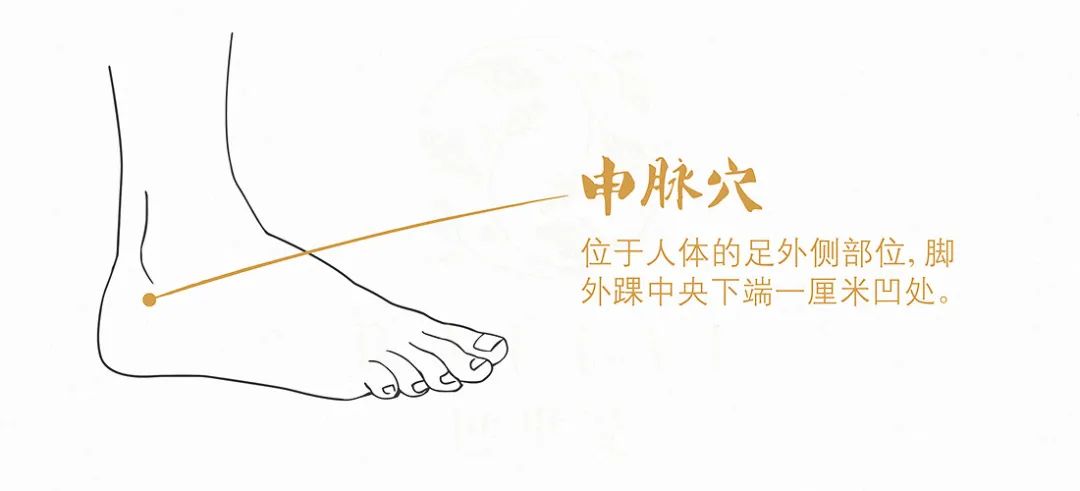
“Lower back pain and leg pain” are clear signs of cold invasion in the Bladder Meridian. Since the Yang Qiao Mai connects to the Bladder Meridian, the Shen Mai acupoint is an important point on the Bladder Meridian. Therefore, the Shen Mai acupoint is a pure yang point that can dispel internal cold and promote the flow of yang qi to the top of the head, balancing the body and allowing for agile movement.
When combined with Xiao Qing Long Tang (Minor Blue Dragon Decoction), it achieves a synergistic effect of resolving both exterior and interior conditions. This helps to expel cold from the body quickly while restoring one’s yang qi, making it a remarkable acupoint for dispelling cold and reviving yang.
The Shen Mai acupoint is an important intersection of the Yang Qiao and Taiyang Bladder Meridians, and it is easy to locate, found in the depression just below the outer ankle bone. When the body is invaded by cold, it tends to curl up and shiver, which in TCM is referred to as “contraction and withdrawal.” The Shen Mai acupoint has the effect of stretching the meridians, quickly mobilizing the body’s yang qi; when yang qi is sufficient, the cold will disperse.
七、Gong Sun (Gong Sun): Alleviating Dysmenorrhea and Spleen-Stomach Disorders
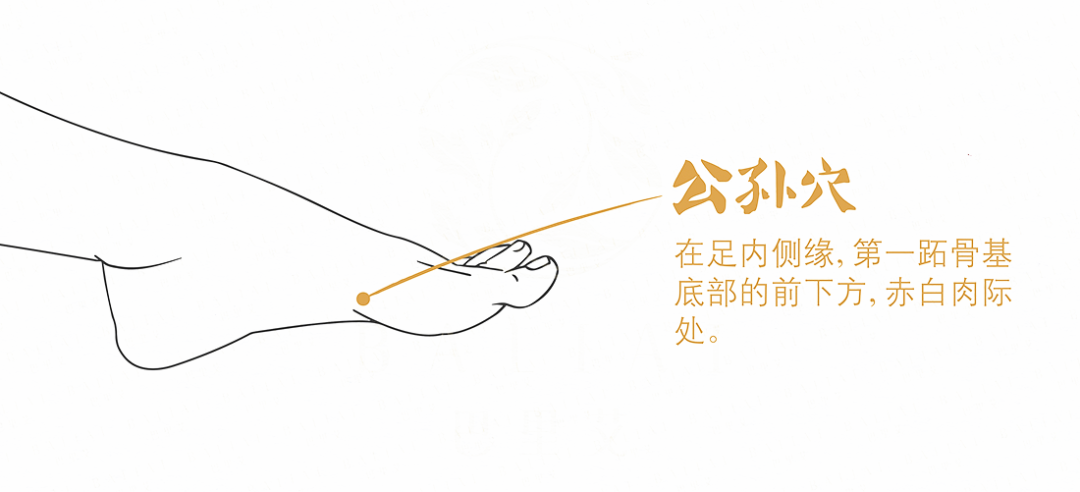
The Gong Sun acupoint is a connecting point of the Spleen Meridian, associated with the spleen and directly linked to the stomach, as well as connecting with the Chong Mai located in the chest and abdomen. Therefore, it has the ability to treat various disorders of the spleen, stomach, and abdominal region.
In medicine, it is believed that treating all gynecological diseases should start with the spleen and stomach, especially for menstrual irregularities, where the stomach should be prioritized. The spleen governs blood and is responsible for transformation and transportation. If the spleen and stomach are deficient and cold, they cannot transform and transport fluids, leading to dysmenorrhea, which may also be accompanied by symptoms such as vomiting, nausea, and headaches.
Women experiencing dysmenorrhea can benefit from massaging the Gong Sun acupoint. The Gong Sun acupoint is located on the inner edge of the foot; I generally consider it as a region, pressing along the large metatarsal bone behind the big toe, finding the point where there is a significant sensation of soreness or pain, which is your personal Gong Sun acupoint.
八、Lin Qi (Lin Qi): Promoting the Yang Qi of the Body
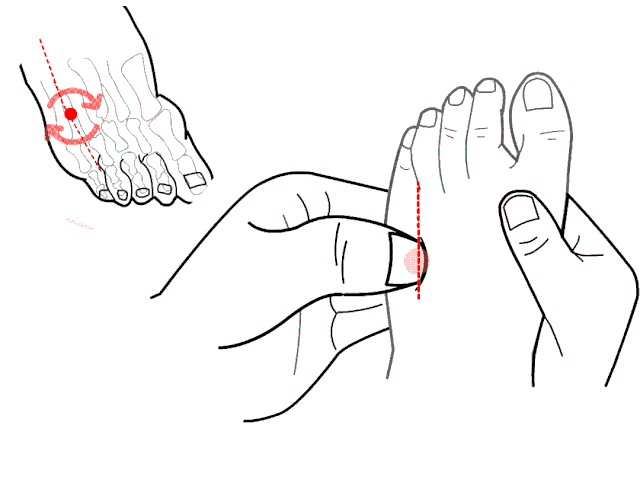
The Lin Qi acupoint is one of the main acupoints on the Gallbladder Meridian, connecting with the Dai Mai, and serves as a wonderful acupoint for regulating two meridians. The Dai Mai encircles the body around the navel, like a jade belt, restraining the flow of qi and blood between the meridians, making it a very important health meridian for the body. When using this acupoint, a seated position with bent legs is recommended; it is located on the outer side of the foot, in the gap between the fourth and fifth metatarsal bones. The Lin Qi acupoint promotes the yang qi of the body and helps to disperse the stagnant qi of the liver and gallbladder. Regular pressing can yield better results than professional foot therapy.
The extraordinary meridians are distinct from the twelve primary meridians, namely the Du Mai, Ren Mai, Chong Mai, Dai Mai, Yang Qiao Mai, Yin Qiao Mai, Yang Wei Mai, and Yin Wei Mai. The content of the Eight Extraordinary Meridians was first mentioned in the “Huangdi Neijing” and compiled in the “Nanjing, Chapter 27,” where the name “Eight Extraordinary Meridians” was introduced, detailing their distribution routes and symptoms, stating: “All these eight meridians are not bound by the primary meridians, hence they are called the Eight Extraordinary Meridians.” The Eight Extraordinary Meridians do not connect to the organs, do not have primary meridian acupoints (except for the Ren and Du meridians), and do not have paired relationships with the exterior. They are intricately interwoven among the twelve meridians, playing a role in regulating the overflow of qi from the primary meridians.
For ordinary individuals with robust blood and qi, the twelve primary meridians and the five organs have good vitality, but the Eight Extraordinary Meridians are less involved. According to meridian theory, the internal qi generally fills the twelve primary meridians, and only when there is excess internal qi does it begin to flow into the Eight Extraordinary Meridians. For practitioners, once the internal qi is activated, it is advisable to first cultivate the Du Mai (this point is often reversed by those practicing Pure Land or esoteric methods, which can lead to confusion), then connect to the Ren Mai and subsequently to the Chong Mai (the two meridians on either side of the Ren Mai). This is because during this stage, although the lower abdomen may be stimulated, the true qi is still insufficient, so it is advisable to focus on the important meridians.
The importance of the Du Mai lies in its pathway, which connects to the brain and the heart, both of which are key areas that practitioners must first regulate. This is because when the internal qi enters the brain through the Baihui acupoint, it can develop prajna wisdom; additionally, when the internal qi flows through the heart, practitioners can enter the subtle state of breath, reaching the realm of both leaking and non-leaking practitioners. In the seemingly imperceptible breath, one can then fill the entire body with internal qi.

